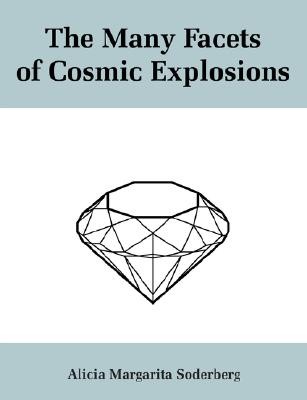
- We will send in 10–14 business days.
- Author: Alicia Soderberg
- Publisher: Dissertation.Com
- ISBN-10: 1581123779
- ISBN-13: 9781581123777
- Format: 18.9 x 24.6 x 1.4 cm, minkšti viršeliai
- Language: English
- SAVE -10% with code: EXTRA
Reviews
Description
Over the past few years, long-duration gamma-ray bursts (GRBs), including the subclass of X-ray flashes (XRFs), have been revealed to be a rare variety of Type Ibc supernova (SN Ibc). While all these events result from the death of massive stars, the electromagnetic luminosities of GRBs and XRFs exceed those of ordinary Type Ibc SNe by many orders of magnitude. The observed diversity of stellar death corresponds to large variations in the energy, velocity, and geometry of the explosion ejecta. Using multi-wavelength (radio, optical, X-ray) observations of the nearest GRBs, XRFs, and SNe Ibc, I show that GRBs and XRFs couple at least 1048 erg to relativistic material while SNe Ibc typically couple less than 1048 erg to their fastest (albeit non-relativistic) outflows. Specifically, I find that less than 3 percent of local SNe Ibc show any evidence for association with a GRB or XRF. Interestingly, this dichotomy is not echoed by the properties of their optical SN emission, dominated by the radioactive decay of Nickel-56; I find that GRBs, XRFs, and SNe Ibc show significant overlap in their optical peak luminosity and photospheric velocities. Recently, I identified a new class of GRBs and XRFs that are under-luminous in comparison with the statistical sample of GRBs. Owing to their faint high-energy emission, these sub-energetic bursts are only detectable nearby (z
EXTRA 10 % discount with code: EXTRA
The promotion ends in 23d.01:18:27
The discount code is valid when purchasing from 10 €. Discounts do not stack.
- Author: Alicia Soderberg
- Publisher: Dissertation.Com
- ISBN-10: 1581123779
- ISBN-13: 9781581123777
- Format: 18.9 x 24.6 x 1.4 cm, minkšti viršeliai
- Language: English English
Over the past few years, long-duration gamma-ray bursts (GRBs), including the subclass of X-ray flashes (XRFs), have been revealed to be a rare variety of Type Ibc supernova (SN Ibc). While all these events result from the death of massive stars, the electromagnetic luminosities of GRBs and XRFs exceed those of ordinary Type Ibc SNe by many orders of magnitude. The observed diversity of stellar death corresponds to large variations in the energy, velocity, and geometry of the explosion ejecta. Using multi-wavelength (radio, optical, X-ray) observations of the nearest GRBs, XRFs, and SNe Ibc, I show that GRBs and XRFs couple at least 1048 erg to relativistic material while SNe Ibc typically couple less than 1048 erg to their fastest (albeit non-relativistic) outflows. Specifically, I find that less than 3 percent of local SNe Ibc show any evidence for association with a GRB or XRF. Interestingly, this dichotomy is not echoed by the properties of their optical SN emission, dominated by the radioactive decay of Nickel-56; I find that GRBs, XRFs, and SNe Ibc show significant overlap in their optical peak luminosity and photospheric velocities. Recently, I identified a new class of GRBs and XRFs that are under-luminous in comparison with the statistical sample of GRBs. Owing to their faint high-energy emission, these sub-energetic bursts are only detectable nearby (z


Reviews